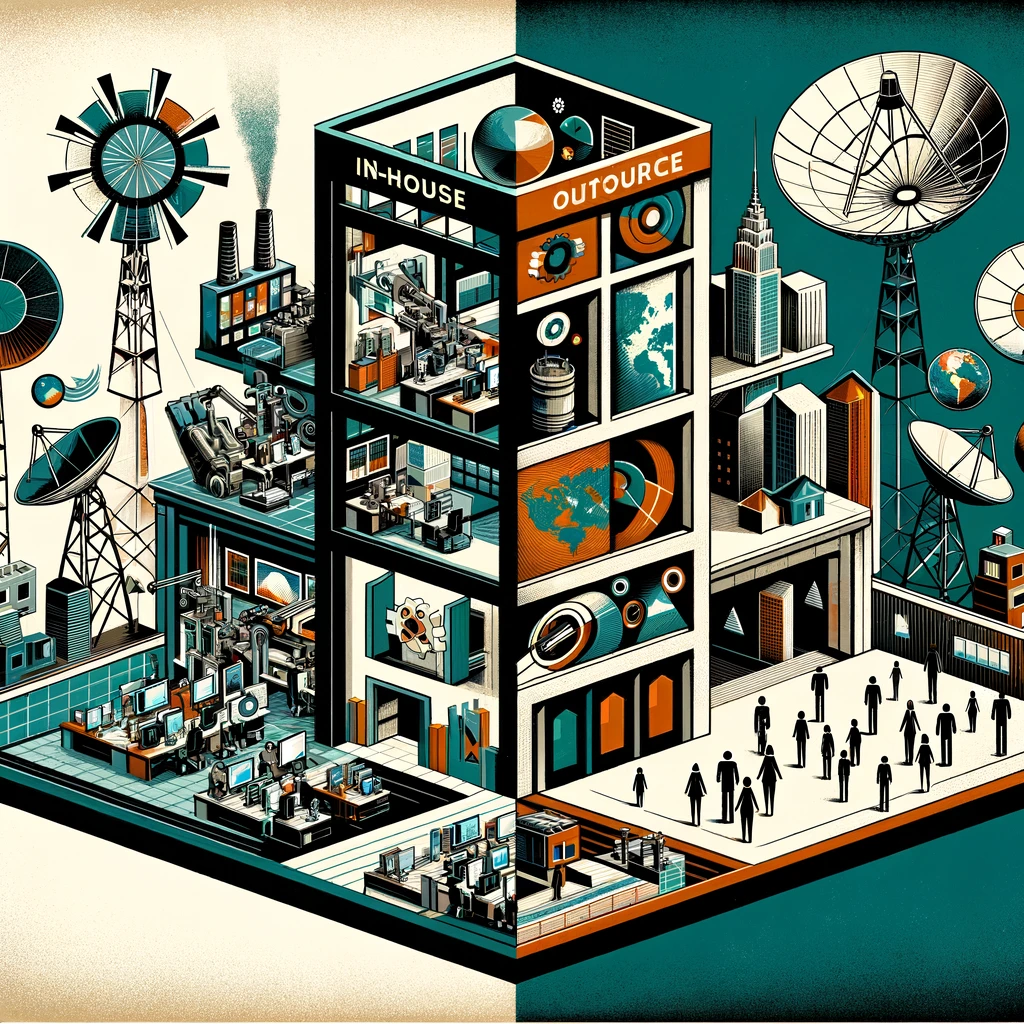The merit of In-House AI team

In an era where Artificial Intelligence (AI) is revolutionizing business operations and decision-making processes, organizations face a critical and complex choice. They must decide whether to build an in-house AI development team, outsource to external vendors, or adopt off-the-shelf products. This decision is far from straightforward and involves a multitude of factors that go beyond the initial considerations of cost and expertise.
An in-house AI development team offers the advantage of a deep-rooted understanding of corporate needs across various functions, not just the one that contracts the service. This team can also tailor solutions to the unique challenges and objectives of the organization, providing a level of customization and control that is hard to match. Moreover, in-house teams excel in the ability to integrate AI solutions seamlessly with existing systems, thereby creating a cohesive and efficient technological ecosystem.
However, the in-house route is not without its challenges. It demands significant investment in talent acquisition, technology, and ongoing maintenance. Plus, there are considerations around data governance, architecture, and quality, which are integral parts of the Data Management Body of Knowledge (DAMA) framework.
On the flip side, external vendors and off-the-shelf products, while potentially quicker to deploy, often lack the depth of understanding of an organization’s multifaceted needs. They may be limited to the scope defined by the contracting function within the enterprise and can pose challenges in terms of solution integration, especially when multiple vendors are involved.
To help organizations navigate this complex landscape, we have developed a comprehensive Pros and Cons Matrix that includes not just traditional criteria like cost, control, and customization, but also factors like cybersecurity, DAMA dimensions, understanding of corporate needs, and solution integration capabilities. This matrix serves as a guide for organizations to weigh the various factors meticulously and make an informed decision that aligns with both their immediate requirements and long-term strategic goals.
The choice between in-house development, external vendors, and off-the-shelf products is a multifaceted one, influenced by a range of criteria that extend from technical and financial to strategic and organizational. By taking a holistic view that considers all these dimensions, organizations can make a choice that is not just viable but also sustainable in the long run.
Pros and Cons Matrix
| Criteria | In-House AI Development Team | External Development Team | Off-the-Shelf Products |
|---|---|---|---|
| Customization | High: Tailored solutions specific to company needs. | Moderate: Some customization but within the scope of the external team's expertise. | Low: Limited to available features; not tailored. |
| Control | High: Complete control over the development process. | Moderate: Shared control; dependent on vendor's terms. | Low: No control over product features. |
| Cost | High: Requires investment in talent, technology, and ongoing maintenance. | Moderate-High: Development costs plus vendor fees. | Low-Moderate: One-time purchase or subscription fees. |
| Time to Market | Moderate: Development time depends on project complexity. | Moderate: Development time depends on vendor's schedule. | Fast: Product is already developed and ready for deployment. |
| Scalability | High: Can be scaled according to company needs. | Moderate: Scalability depends on vendor's capabilities. | Low-Moderate: Limited scalability options. |
| Expertise | High: In-house team can develop specialized expertise. | Moderate: Vendor expertise may not fully align with company needs. | Low: Limited to the expertise of the product developers, which may not align with company needs. |
| Data Security | High: Complete control over data security protocols. | Low-Moderate: Partial control; dependent on vendor's security measures. | Low: No control over data security. |
| Cybersecurity | High: Can implement company-specific cybersecurity measures. | Moderate: Dependent on vendor's cybersecurity measures. | Low: No control over cybersecurity. |
| Flexibility & Adaptability | High: Can quickly adapt to changing business needs. | Low-Moderate: Some flexibility but generally dependent on vendor's capabilities. | Low: Limited flexibility; dependent on product features. |
| Resource Allocation | High: Resources can be allocated as needed. | Low: No control over vendor's resource allocation. | N/A: Not applicable as resources are managed by the product vendor. |
| Data Governance (DAMA) | High: Complete control over data governance. | Moderate: Some control but dependent on vendor's governance policies. | Low: No control over data governance. |
| Data Architecture (DAMA) | High: Can design architecture to suit specific needs. | Moderate: Limited to vendor's architecture. | Low: No control over data architecture. |
| Data Quality (DAMA) | High: Complete control over data quality. | Moderate: Some control but dependent on vendor's quality measures. | Low: No control over data quality. |
| Understanding Corporate Needs | High: In-house teams have a better understanding of corporate needs. | Low-Moderate: Understanding is generally contract-specific. | Low: Product is not designed with a specific corporation's needs in mind. |
| Solution Integration | High: Easier to integrate with existing systems. | Low: Difficult to integrate with other vendor solutions. | Low-Moderate: Some integration capabilities but generally limited. |

